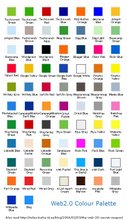
Web 2.0 can appear as a disjointed and unstructured milieu of links that lets users celebrate the various freedoms afforded information shares, tract backs, commentary, participation and contribution. In effect the user is always social. Always creating, updating and modifying links. Turow and Tsui speculate that we are now ‘hyper-linked’ and its always nice to insert the word hyper to make something appear de rigeur, of the moment and with the added sense of urgency. You are not linked, unless you are hyperlinked!
The integration between articles and social tools is a telling one, and the situation for where would disagree about the looseness of Web 2.0. We are at liberty to participate and to decline participation; however our very openness means that links are valued for their level of trust and content of truth.
Previously (version Web 1.0) this had led to assumptions that there is little integration of more static offline links to sinuous online connections. This was a world with outside and inside doors that had locks and bolts. The power of Web 2.0 is its social composition. The newer concept of digital social networking reveals how most connections are user led and have an important social aspect to them. From the point of view of those of us who are hyperlinked, the most interesting aspects are the creation and recreation of ourselves, likes and connections across digital technologies. Our expectations tap into Surowiecki's Wisdom of Crowds versus Keen’s Cult of the Amateaur.
John Battelle describes the underlying structure as a ‘database of intentions’. And he is right. How we search, navigate content providers and contribute means links become more valued and we, ourselves, valuable.
And lets face it, no-one wants just one friend on Facebook.


No comments:
Post a Comment